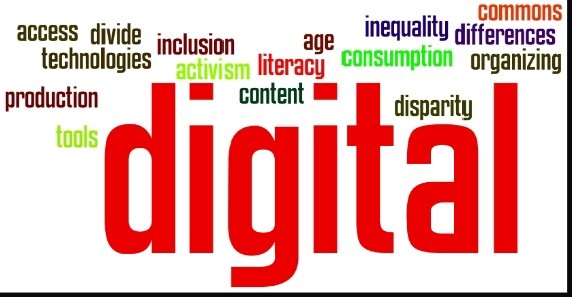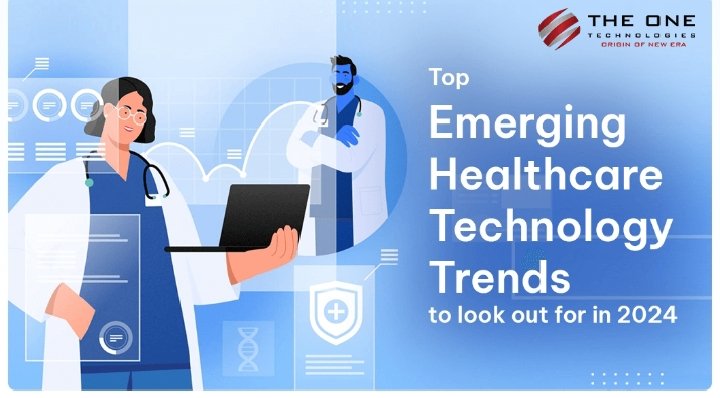How Future Healthcare Technology is Elevating At-Home Care
Introduction
The landscape of healthcare is undergoing a profound transformation as future technologies continue to advance at breakneck speeds. No longer confined to traditional hospital settings, innovative solutions are now enabling patients to receive comprehensive care from the comfort of their homes. This shift is driven by the convergence of several groundbreaking technologies—from artificial intelligence and remote monitoring to smart home integration and wearable devices—that are collectively redefining the way healthcare is delivered. As these innovations evolve, they promise not only to enhance the quality and accessibility of care but also to empower patients to manage their health more proactively.
At-home care is increasingly becoming a focal point of healthcare innovation, as it offers the potential to reduce costs, lessen the burden on overstretched hospital systems, and provide a more personalized care experience. This article delves into the multifaceted ways in which future healthcare technology is elevating at-home care. We will explore advancements in telemedicine, the role of AI in diagnostics and treatment customization, the emergence of wearable and smart devices, and the critical importance of data security and ethical practices. In doing so, we also address frequently asked questions to provide clarity on this evolving field and ensure that readers gain a comprehensive understanding of the future of healthcare.
The Evolution of Telemedicine and Remote Monitoring
Telemedicine has rapidly transitioned from a niche service to a mainstream component of modern healthcare. This transformation has been propelled by improvements in video conferencing technologies, mobile applications, and broadband connectivity, which collectively enable real-time virtual consultations. For many patients, especially those in rural or underserved communities, the ability to consult a healthcare provider via a digital platform has become a game changer, offering an accessible alternative to in-person visits.
Remote monitoring further complements telemedicine by allowing continuous tracking of vital health metrics such as blood pressure, blood glucose levels, heart rate, and oxygen saturation. Smart devices equipped with sensors can transmit patient data directly to healthcare professionals, facilitating early detection of anomalies and timely intervention. With the incorporation of artificial intelligence, these systems are not only reactive but also predictive. AI algorithms analyze historical and real-time data to forecast potential health issues, thereby enabling preemptive measures that can prevent complications before they arise.
AI-Driven Diagnostics and Personalized Treatment
Artificial intelligence is at the forefront of the next wave of healthcare innovations, especially in diagnostics and personalized treatment. AI-powered diagnostic tools can analyze complex data sets, including medical images and patient histories, to identify patterns and anomalies that may escape human observation. This leads to faster and more accurate diagnoses, which are particularly crucial for conditions that require immediate attention.
Beyond diagnostics, AI is revolutionizing treatment plans by tailoring them to individual patient needs. Machine learning algorithms process vast amounts of data—from genetic information to lifestyle factors—to design personalized care plans that optimize treatment outcomes. For instance, in oncology, AI systems help identify the most effective treatment protocols based on a patient’s unique genetic makeup and tumor profile. This precision medicine approach not only improves the likelihood of treatment success but also minimizes side effects, ultimately leading to better patient experiences and outcomes.
The Rise of Wearable Technology and Smart Devices
Wearable technology has come a long way from simple step counters to sophisticated health monitoring systems. Today’s wearable devices are capable of tracking a wide range of health parameters in real time. Smartwatches, fitness bands, and even smart clothing equipped with sensors collect data on heart rate, sleep patterns, physical activity, and more. This constant stream of information is invaluable for both patients and healthcare providers, as it allows for continuous monitoring and early detection of potential health issues.
The future promises even more advanced wearable devices that integrate seamlessly with broader healthcare systems. Researchers are developing smart patches and embedded sensors that provide more accurate readings and can even detect subtle changes in a patient’s condition. These innovations will not only empower patients to better understand and manage their own health but will also enable healthcare providers to tailor their interventions with unprecedented precision.
Smart Home Integration for Comprehensive Care
Smart home technology is another critical component in the evolution of at-home healthcare. The integration of healthcare functionalities into everyday home environments can transform a residence into a proactive care center. Voice-activated assistants, connected appliances, and automated systems are being designed to support the health needs of residents—especially the elderly and those with chronic conditions.
For example, smart speakers can now remind patients to take their medications, monitor room temperature for optimal comfort, and even alert emergency services in case of a fall. Moreover, advanced smart home systems can integrate with wearable devices and remote monitoring tools to create a cohesive ecosystem that provides a holistic view of a patient’s health. This level of integration ensures that care is not just reactive but also preventive, with systems working continuously to maintain a safe and healthy environment.
Data Security and Ethical Considerations
While the promise of future healthcare technology is immense, it also raises significant concerns about data privacy and ethical use. With the proliferation of connected devices and digital health records, ensuring the security of patient data has become paramount. Healthcare providers and technology companies must adhere to strict regulatory frameworks, such as HIPAA in the United States, to safeguard sensitive information against breaches and unauthorized access.
In addition to technical safeguards like encryption and secure data storage, ethical considerations must guide the deployment of these technologies. Issues such as consent, data ownership, and equitable access are central to the responsible use of digital health solutions. As we continue to integrate technology into every facet of healthcare, it is crucial to maintain transparency and foster trust between patients and providers.
Overcoming the Digital Divide

One of the significant challenges in the widespread adoption of at-home healthcare technology is the digital divide. Not all patients have equal access to high-speed internet, smart devices, or the necessary digital literacy to fully benefit from these advancements. Addressing this gap is essential to ensure that technological innovations in healthcare do not inadvertently widen existing disparities.
Efforts to bridge the digital divide include community outreach programs, government-funded initiatives, and partnerships with tech companies to provide affordable and accessible solutions. By ensuring that underserved populations receive the support they need, the future of at-home care can be truly inclusive, ensuring that all individuals, regardless of their socioeconomic status, benefit from the advances in healthcare technology.
Enhancing Patient Engagement and Self-Management
A notable benefit of integrating future healthcare technology into at-home care is the increased patient engagement and empowerment it facilitates. With access to detailed health data and personalized insights, patients become active participants in their own care. This shift towards a more collaborative approach not only improves health outcomes but also enhances patient satisfaction and overall quality of life.
Educational platforms, interactive apps, and online communities are emerging as vital tools for patient self-management. These resources provide valuable information about managing chronic conditions, adopting healthier lifestyles, and navigating complex treatment plans. By fostering a proactive approach to health, these technologies help patients make informed decisions and take ownership of their wellbeing.
Frequently Asked Questions (FAQs)
Will these technologies replace traditional in-person healthcare visits?
While future healthcare technology is set to transform at-home care, it is not intended to completely replace traditional healthcare. Instead, these innovations complement in-person care by handling routine monitoring and early detection, allowing healthcare professionals to focus on more complex cases that require direct intervention.
How can patients be sure their personal health data is secure?
Ensuring data security is a top priority. Healthcare systems employ robust encryption methods, secure data storage protocols, and strict adherence to privacy regulations to protect patient information. Regular security audits and updates further reinforce these measures, offering patients peace of mind.
Are wearable devices accurate enough to be used for medical diagnosis?
Wearable devices provide valuable continuous data that can signal potential health issues; however, they are primarily designed for monitoring rather than diagnosing conditions. Professional medical evaluations are still necessary for accurate diagnosis and treatment planning, though wearables serve as an effective early warning system.
What measures are being taken to ensure equitable access to these technologies?
Efforts to bridge the digital divide include initiatives aimed at improving digital literacy, subsidizing the cost of smart devices, and expanding broadband access in underserved areas. Collaborative efforts between governments, healthcare organizations, and tech companies are essential in making these advancements accessible to everyone.
How do smart home systems integrate with other healthcare devices?
Smart home systems are designed to work in tandem with wearable devices and remote monitoring tools. By using interoperable platforms and standard communication protocols, these systems create a unified ecosystem that allows seamless sharing of health data between devices and healthcare providers.
Conclusion
The future of healthcare is being reimagined with technology at its core, particularly in the realm of at-home care. The integration of telemedicine, AI-driven diagnostics, wearable devices, and smart home systems represents a paradigm shift in how care is delivered. These innovations are not only making healthcare more accessible and personalized but are also setting the stage for a more proactive and patient-centric approach to managing health.






Hey there, You have done a fantastic job. I will certainly digg it and personally recommend to my friends. I’m confident they’ll be benefited from this site.
Simply desire to say your article is as surprising. The clearness in your post is simply excellent and i could assume you are an expert on this subject. Fine with your permission let me to grab your feed to keep up to date with forthcoming post. Thanks a million and please carry on the gratifying work.
Nice blog here! Also your site loads up very fast! What host are you using? Can I get your affiliate link to your host? I wish my site loaded up as quickly as yours lol